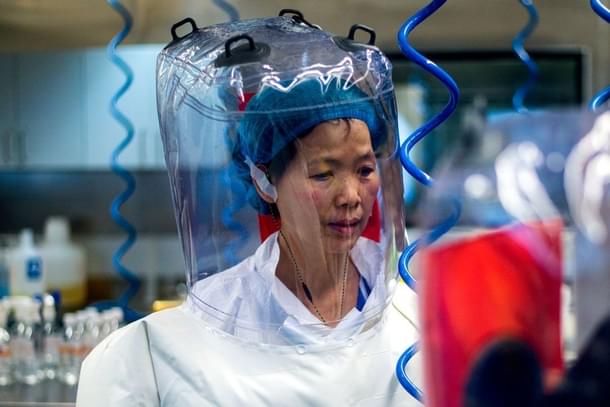Ideas
Covid-19 Origins And Obfuscations: Those Who Preach About Keeping 'Science At Heart' Must Follow Their Own Advice
Sujeet Mishra
May 17, 2021, 11:04 AM | Updated 11:03 AM IST
Save & read from anywhere!
Bookmark stories for easy access on any device or the Swarajya app.


Lancet, one of the world’s most influential scientific journals, published an editorial on 08 May criticising India for mishandling the pandemic.
The overly prescriptive editorial signs off by saying: "The success of that effort will depend on the government owning up to its mistakes, providing responsible leadership and transparency, and implementing a public health response that has science at its heart".
This was readily picked up by several Indian publications.
What hit me hard were the words ‘implementing a public health response that has science at its heart’.
Does it not make sense? It does, but dive a little deeper and one gets appalled at the signs of selectiveness and at the act of being preachy to a victim while protecting the perpetrator.
Timeline of Obfuscation:
--WHO declares on 14 January 2020 that human-to-human transmission is not possible.
--On 20 January 2020, China accepts that such transmission is indeed occurring.
--23 January 2020, Wuhan locked down, however, five million people have travelled out spreading the virus.
--On 19 February 2020, Lancet and on 17 March 2020 Nature Medicine publish opinions that the virus had natural origins. By this time, the world was drawn deep in to the battle. India locked down on 25 March for 21 days.
--5 January 2021, Global Times reports that minks were possible hosts of the virus.
--All of this then became the platform to build the opinion that a lab escape scenario was least likely hypothesis for the origin of Covid-19.
On 3 May, a detailed post appeared on The Medium, by Nicholas Wade, titled Origin of Covid - Following the Clues.
Nicholas is described by the Bulletin of Atomic Scientists as a science writer, editor, and author who has worked on the staff of Nature, Science, and, for many years, the New York Times.
If one is short on time, key points of Nicholas Wade's essay can be seen here. His interview on Republic is here.
Wade points out that at the very core of misinformation on the origin of the virus, one finds two letters or statements.
One was published by Lancet, titled, 'Statement in support of the scientists, public health professionals, and medical professionals of China combatting COVID-19' and another by Nature Medicine, titled, 'The proximal origin of SARS-CoV-2'.
Both are amongst most respected scientific journals.
Excerpts from the letter published in Lancet
"We sign this statement in solidarity with all scientists and health professionals in China …
…
The rapid, open, and transparent sharing of data on this outbreak is now being threatened by rumours and misinformation around its origins. We stand together to strongly condemn conspiracy theories suggesting that COVID-19 does not have a natural origin. Scientists … overwhelmingly conclude that this coronavirus originated in wildlife, as have so many other emerging pathogens. This is further supported by a letter from the presidents of the US National Academies of Science, Engineering, and Medicine and by the scientific communities they represent ... We support the call from the Director-General of WHO to promote scientific evidence and unity over misinformation and conjecture…
…
We declare no competing interests.
Lancet Published: February 19, 2020"
Without verifying the science, Lancet allowed its platform to publish a letter which claimed that that the Covid-19 virus came from nature.
What is equally intriguing is that the world of science, by that time, was already noticing how hard was China trying to obfuscate the issue of the origins of Covid-19 virus.
Dr Li Wenliang, who was one of the first medics to report that something was amiss in Wuhan, was forced to recant before he died, possibly by Covid-19.
This was all known to the men and women who still spoke through Lancet with sole aim of creating the narrative that the virus emerged from nature.
Though the signatories to the letter in Lancet indicated no conflict of interest, it emerged that Peter Daszak, a signatory and the person who coordinated the campaign, was clearly an interested party.
This person had outsourced research on coronavirus, funded by the US government, to WIH (Wuhan Institute of Virology).
What further emerges is that this individual was also on the WHO’s panel which visited Wuhan as part of an international investigation to understand more about the origins of the virus.
The second letter which got published a month later says: "Our analyses clearly show that SARS-CoV-2 is not a laboratory construct or a purposefully manipulated virus.
Though this letter gave some caveats, nevertheless, as Wade points out, the slant shows.
Is Covid-19 Virus Man Made?
The Covid-19 virus appears to be human engineered and Wade presents evidence which can not be dismissed as a conspiracy.
However, by getting endorsement from, and in, most reputed journals, lining up big names in virology as signatories, academics who would have wanted to explore the lab-origin theories were silenced for the fear of their careers.
It emerges from Wade's essay that the virus was already primed to attack human beings a with pre-programmed ferocity.
He also presents techniques which are well known and established to not leave behind any trace of manipulation.
Wade also shares a YouTube interview of Peter Daszak, where he talks of manipulating these viruses and how these new strains can evade existing treatment and vaccines, as part of his research of which WIH was a key component.
The technique of engineering these viruses to attack other species was taught by Dr Ralph Baric of University of North Carolina, USA, to Dr Shi Zhengli, the 'bat lady' of Wuhan — who is at the centre of the entire episode and became conspicuous by her absence for several months.
Wade informs that what Shi set out to do was to "create new corona viruses with highest possible infectivity of human cells".
Men and women of science have a bounden duty to pursue science on the established gold standards of verification, validation, reproducibility, repeatability.
Their work defines the frontiers of knowledge and scope of action by governments.
They also have responsibility to continuously weigh the implications of their work. Whether it was the intention to weaponise the virus or whether to purpose was to make a better vaccine, the research to supercharge the known killer and infectious viruses happened and it continues.
If indeed the virus was programmed to kill, the project has succeeded spectacularly.
By collaborating with a lab with known military links, agreeing to work in a set up which was clearly way outside audit and scrutiny, these men and women of science have lot to answer. Their letters or joint statements fall short of what is expected.
Turbocharged Psyops In The Times Of Social Media
Remember Syed Ghulam Nabi Fai? The soft-spoken intellectual who was hosting Indian intellectuals and driving an international campaign for the cause of Kashmir?
Many amongst us were convinced by the nuanced view on Kashmir that Indian editors and intellectuals propounded, till the Fai network was busted by the FBI and it was found that the ISI, through Fai, put these seeds of doubt and influenced many intellectuals, who in turn influenced us.
That was before social media.
Psychology, which drives the weaponisation of social media has been dealt with at length by the whistle blower of Cambridge Analytica in this interesting book - a must read to understand the threat of algorithm-curated news and video feeds.
Now, weigh this - China has increased foreign influence efforts in USA by 500 per cent ($10 million in 2016 to nearly $64 million last year).
Similarly, it is reported that China used the media to spread its Covid narrative — and win friends around the world.
WHO, the most credible voice which decision makers lean on, lost on its credibility by allowing a possible perpetrator drive it.
Using enormous leverage that Chinese academia and economy now enjoys, the entire question of Chinese culpability was made meaningless, while the victim, India, gets battered by the virus and international media alike.
Men and women of science who now battle the virus in India and elsewhere as we see our dear ones fall to Covid-19, should hold this ecosystem of letter writers, journalists, and scientists to account.
The Lancet editorial board must investigate the dangerous role it played by giving credibility to disinformation and possibly becoming a party to psyops.
Dr Sujeet Mishra is a railwayman and currently the OSD of the National Rail and Transportation Institute, which is in transition to become Gati Shakti Vishwavidyala, a central university.




